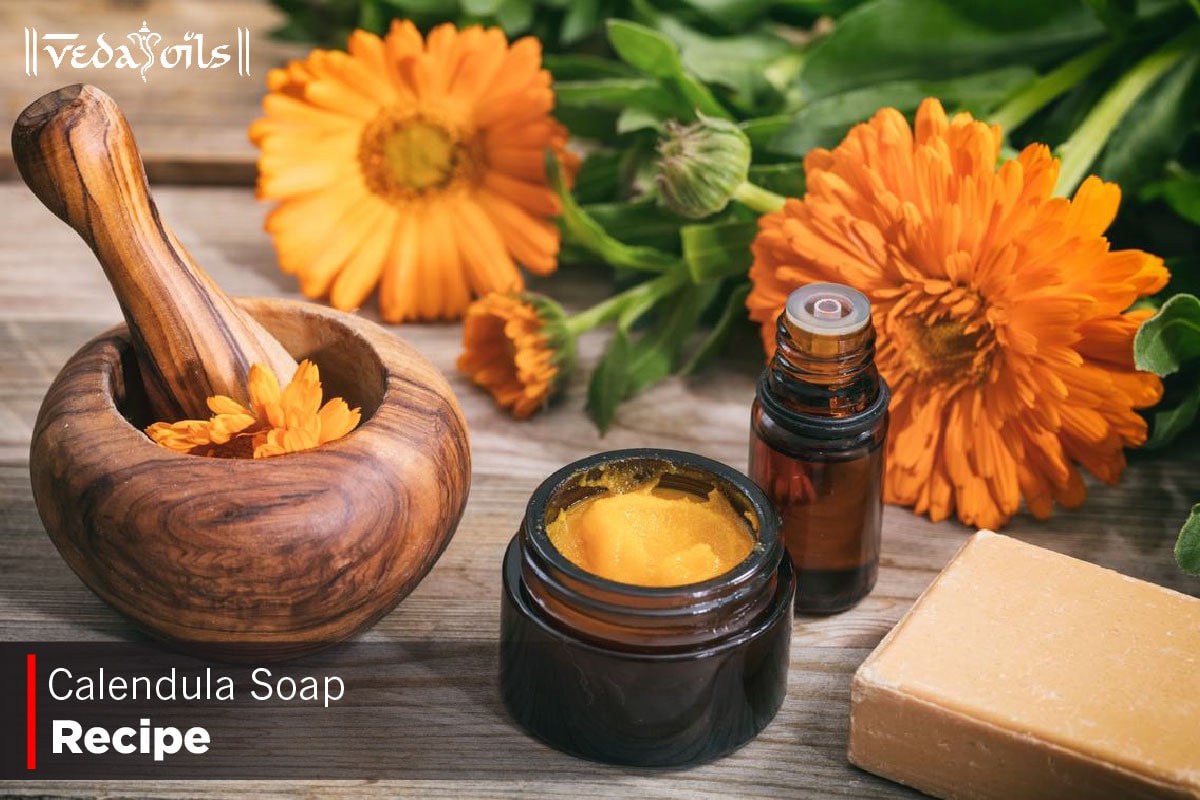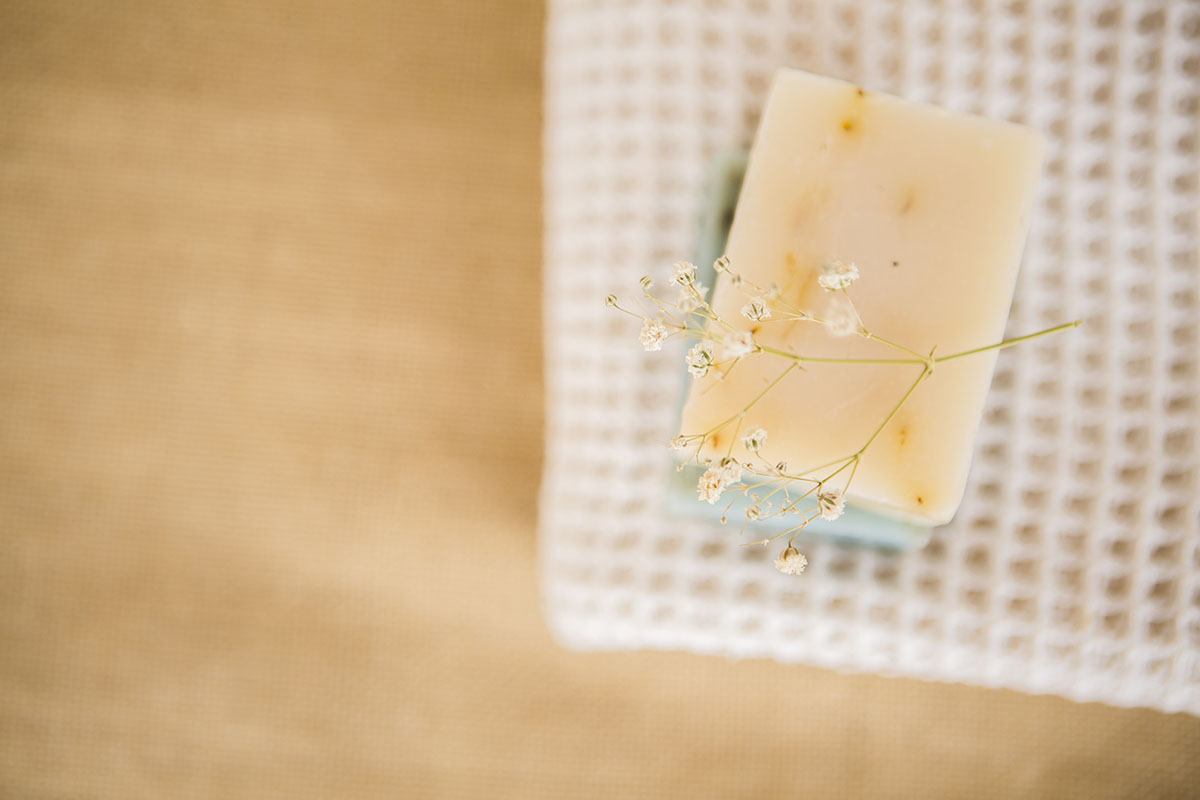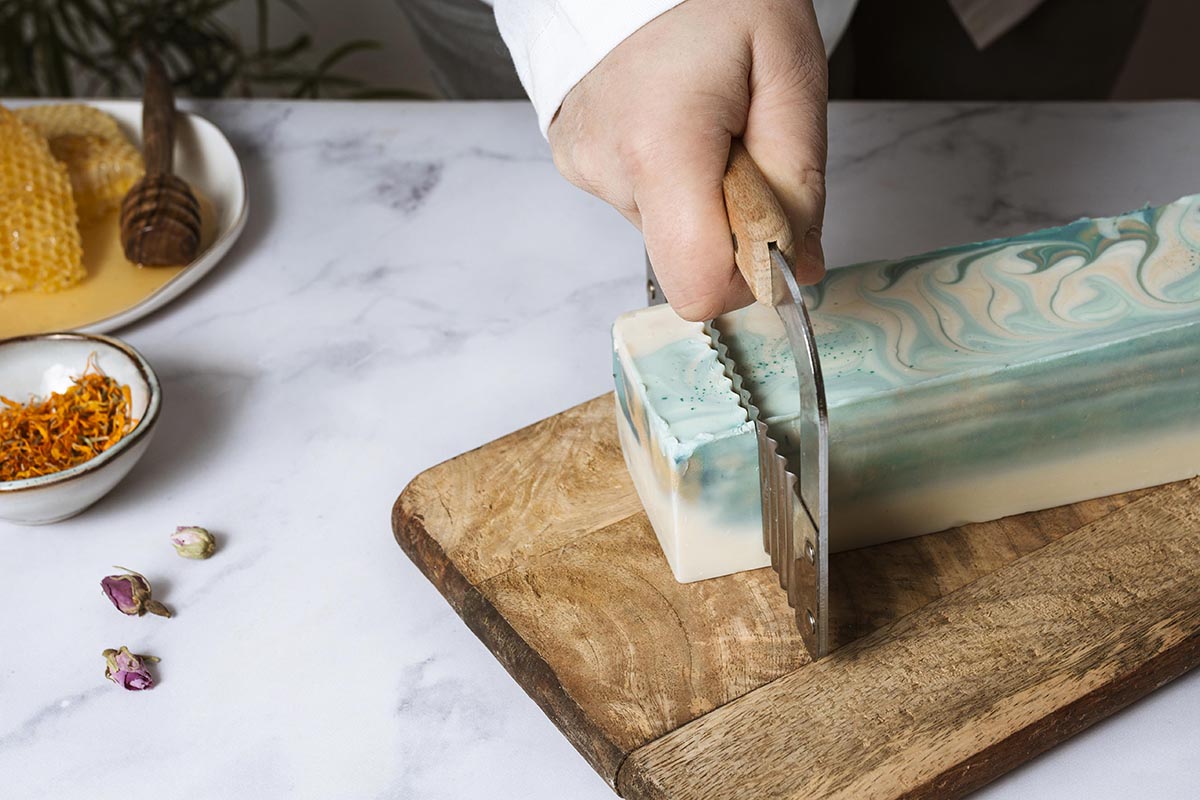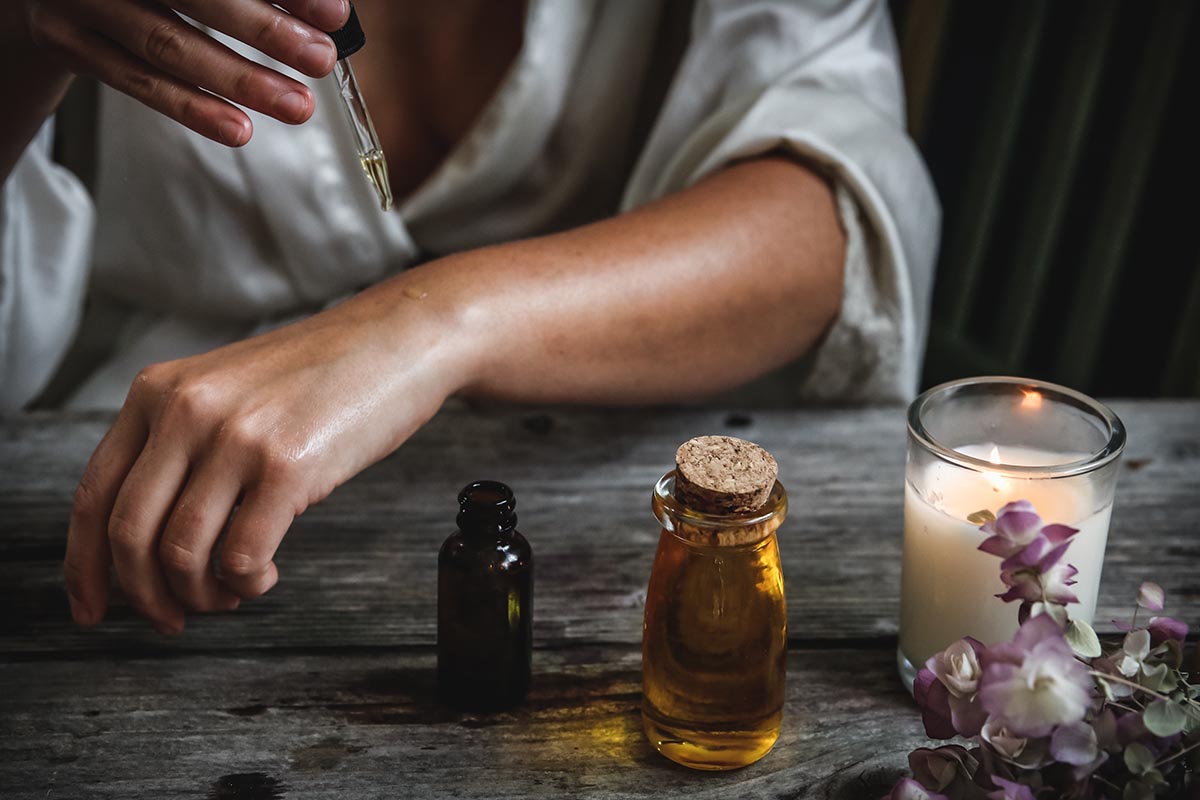Calendula Soap Recipe – How to Make Calendula Soap at Home?
Calendula soap contains calendula extract or oil. It has anti-inflammatory and antiseptic properties and is believed to be beneficial for irritated or inflamed skin, reducing redness and swelling and promoting healing.
Calendula soap helps those with dry or sensitive skin, as it can help to moisturize and nourish the skin. It is a natural, gentle soap to help soothe and nourish skin. The Calendula soap recipe is easy to try as it consists of naturally available and easily found ingredients.
Benefits Of Calendula Soap For Skin
Calendula essential oil has anti-inflammatory and antiseptic properties, soothes irritated skin, reduces redness and swelling, promotes healing, and can be beneficial for dry or sensitive skin. Five benefits of using calendula soap for skin care-
- Anti-Inflammatory: Calendula contains anti-inflammatory compounds such as flavonoids and triterpenoids. These compounds may help reduce skin inflammation, leading to a soothing effect. This can help improve the skin’s appearance and texture, making it a beneficial ingredient in skincare products. It also helps with skin issues like eczema and rashes.
- Can Help Delay Skin Aging: Calendula is rich in antioxidants, which help to protect the skin from free radical damage that can contribute to premature aging. It also contains compounds that promote collagen production, helping to improve skin elasticity and firmness. This can help delay the signs of aging and keep the skin youthful and healthy.
- Healing properties: Calendula has healing properties due to its anti-inflammatory, antimicrobial, and antifungal effects. It can help to soothe and heal skin irritations, such as cuts, burns, and rashes. Calendula can also promote tissue regeneration, helping to speed up the healing process and improve the skin’s overall health. Calendula soap is soothing for sensitive skin and helps in healing.
- Moisturizing in nature: Calendula moisturizes due to its emollient properties, which help hydrate and soften the skin. It can also help to soothe and calm dry, itchy, or irritated skin, making it a great ingredient for those with dry or sensitive skin. Calendula can help to improve skin texture and leave the skin feeling smooth and supple.
- Gentle and natural: Calendula’s gentle and natural properties make it an ideal ingredient for sensitive or easily irritated skin. It is non-toxic and non-irritating, making it suitable for all skin types. Calendula is also free from harsh chemicals and synthetic fragrances, which can damage the skin. Its natural and gentle properties make it a safe and effective option for the skin.
How To Make Calendula Soap DIY at Home
Calendula soap can be made using various parts of the plant, most commonly the dried flowers, infused into a carrier oil and added to a soap base using cold process soap-making techniques. Here is a simple recipe for making calendula soap at home using dried calendula flowers:
Ingredients:
- 1 cup calendula-infused oil (made by steeping 1 cup of dried calendula flowers in 2 cups of carrier oil for several weeks;)
- 1 cup Virgin coconut oil;
- 1 cup Virgin olive oil;
- 1/2 cup lye;
- 1/2 cup distilled water;
- 1/4 cup dried calendula flowers (optional for exfoliation.)
Equipment:
- Safety goggles and gloves;
- Large mixing bowl;
- Stainless steel or enamel pot;
- Wooden or silicone spatula;
- Digital scale;
- Stick blender;
- Soap molds.
Instructions
Begin by making calendula-infused oil. Place 1 cup of dried calendula flowers in a glass jar and cover it with 2 cups of carrier oil (such as olive or coconut). Seal the jar and let it sit for several weeks in a cool, dark place, shaking occasionally to help extract the calendula’s beneficial properties.
Once the oil is infused, weigh 1 cup of calendula-infused oil, 1 cup of coconut oil, and 1 cup of olive oil, and heat them together in a stainless steel or enamel pot over low heat until they are fully melted.
W weighs 1/2 cup of lye and 1/2 cup of distilled water in a separate container. Slowly pour the lye into the water, stirring gently until fully dissolved. Allow the mixture to cool to room temperature.
While wearing safety goggles and gloves, carefully pour the lye mixture into the pot with the melted oils. Use a stick blender to mix the ingredients until they reach a thin trace (a custard-like consistency).
Add 1/4 cup of dried calendula flowers (if desired) and stir gently to distribute evenly. Place the soap mixture into molds and set it for at least 24 hours. Once the soap has hardened, remove it from the molds and let it cure for 4-6 weeks before using.
How to Make Calendula Soap at Home: Conclusion
Making calendula soap at home is a simple process that involves infusing dried calendula flowers into a carrier oil and then combining it with a soap base using cold-process soap-making techniques. The soap is gentle and nourishing, making it suitable for all skin types.
This recipe uses a coconut and olive oil blend and dried calendula flowers for added exfoliation. With patience and attention to safety, anyone can make their calendula soap at home.
FAQs:
How do I make calendula-infused oil for my soap recipe?
Ans: Place dried calendula flowers in a glass jar to make calendula-infused oil and cover them with a carrier oil, such as olive or coconut oil. Seal the jar and let it sit for several weeks.
What are the benefits of using calendula soap?
Ans: Calendula soap is gentle and nourishing, making it suitable for all skin types. It is known for its anti-inflammatory and moisturizing properties, helping to delay skin aging and promote healing.
Is calendula soap safe for sensitive skin?
Ans: Yes, calendula soap is safe for sensitive skin. Its natural and gentle ingredients are less likely to cause irritation or adverse reactions than synthetic soaps or cleansers.
Can I add other essential oils or herbs to my calendula soap recipe?
Ans: You can customize your calendula soap recipe by adding other essential oils or herbs. However, it’s important to research each ingredient’s properties and potential interactions.
Do I need special equipment to make calendula soap at home?
Ans: Yes, making soap at home requires basic equipment, such as safety goggles and gloves, a stainless steel or enamel pot, a digital scale, and a stick blender.




















